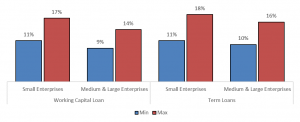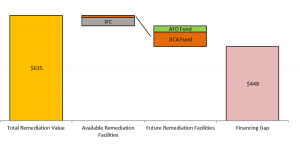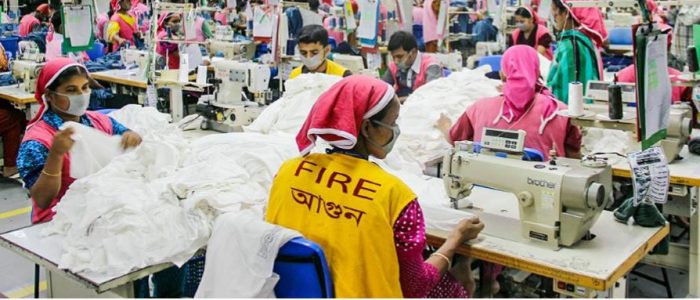Financing Development of Bangladesh Garment Sector
Low safety conditions in the Bangladesh Ready Made Garment (RMG) sector cost lives in the past few years. How much does it cost to make all factories safe and what is stopping factories from doing so?
Bangladesh is one of largest apparel exporters in the world. In the 1980s, about 50 factories produced clothing, while the number is now estimated to hover around 4,269[1].
Production of Ready Made Garment (RMG) is crucial to the Bangladeshi economy, as the sector is the largest employer of women, and the largest earner of foreign currency. International brands appreciate Bangladesh as a sourcing location because of reliable production quality, fast times and low costs.
However, Bangladesh has been plagued by several crises that hurt its image internationally. Since the early 2000’s, international brands had to defend themselves for producing in Bangladesh due to issues like extremely low wages paid to workers, use of child labour in the factories and a widespread lack of transparency in the sector.
However, the largest crisis came from a series of five deadly accidents happened between 2012 and 2013. The largest one of all was the fire happened on April 24th 2012, which caused the collapse of the Rana Plaza Complex (a production facility) and the death of over 1,000 workers in a single day.
These tragedies shocked the international community into action. European and American international apparel brands launched two separate initiatives: the Accord on Fire and Building Safety in Bangladesh (European Brands), the Alliance for Bangladesh Worker Safety (American Brands). Together, these two initiatives together have mapped the safety standards of ~2,000 factories in the country. Not all factories in Bangladesh however supply garment to international brands in one of these two initiatives, and therefore the Government of Bangladesh, supported by the International Labour Organization (ILO) with backing from Canada, the Netherlands, and the United Kingdom, launched the National Initiative under the Tripartite Plan of Action, to assess the factories that were not covered by either of the two private sector initiatives.
This study estimates that the total value of the cost of remediation of all RMG factories that are in one of the three initiatives was ~USD 929 Million, before any remedial activity had taken place. Thanks to these efforts by the international and local communities, remediation on factory ground has started and is on its way. However, as of end of 2015, there remain over USD 600 Million worth of remedial work to be undertaken. Most of this cost is connected to structural remediation of the buildings, followed by the cost of remediating fire and then electrical non-compliance issues.

3 initiatives working in Bangladesh garment sector
Factories managers and owners find themselves in a challenging situation, whereby they have to sustain large costs to remain in business, and to continue working with their international buyers. On top of factory’s willingness to remediate, cost of financing in Bangladesh act as an additional challenge. Until recently, there were no financial products specifically available to remediation in the RMG sector, and factory owners had to finance themselves through available term loans, which present high interest rates (from 10% up to 18%).

Garment factories financial situation
In the last year, various programs specifically targeted at offering cheaper access to loans for remediation activities have been launched:
- The Green Re-Financing Mechanism: The green re-financing mechanism designed and managed by Bangladesh Bank authorizes RMG factories to refinance their loans connected to fire safety remediation and obtain interest rates for BDT loans that should not exceed 9%
- The JICA Credit Facility: The Japan International Cooperation Agency (JICA) launched a financing facility to support the RMG sector to finance projects that will retrofit, rebuild and relocate. The current value of the facility is USD 13 Million, and JICA is already planning for a second stage, when it will be expanded to USD 100 Million
- The IFC Credit Facility: In 2015, The IFC launched a USD 40 Million facility, in partnership with 5 participating’s banks. The facility is specifically targeted at RMG factories implementing safety remediation work.
- USAID Guarantee Scheme: In September 2015, the United States Agency for International Development (USAID) launched 2 credit guarantee schemes that make USD 22 Million available for loans to RMG factories in Bangladesh
- The AFD Credit and TA Facility: The AFD is about to launch a credit facility targeted at the Bangladesh RMG sector. The facility will include a variety of components and partnership that will support it, including the EU, KfW and GIZ
The goal of these facilities is to kick start investments in this crucial area of the Bangladesh economy. Notwithstanding relevant progress made by the initiatives, factories and the international community, there is still a vast amount of remediation to be addressed, implemented and financed.

Current financing gap according to EMC research
Full report available here: Remediation Financing in Bangladesh Ready Made Garment Sector
[1] Source: Bangladesh Garment Manufacturers Association (BGMEA)

Comments are closed.